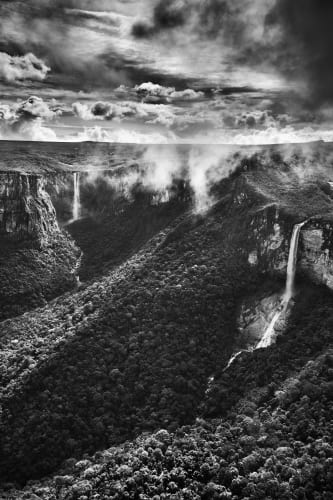“Photography is much more than just taking pictures – it is a way of life. What you feel, what you want to express, is your ideology and your ethics. It’s a language that allows you to travel over the wave of history.”
Salgado’s work spanned continents and decades, but it always returned to the human spirit—its resilience, its dignity, and its place within the natural world. Through projects like Workers, Migrations, and Genesis, he captured the complexity and gravity of the world with a rare sense of purpose. His black-and-white photographs are known not only for their technical mastery and scale but for their emotional depth and commitment to storytelling.
Trained originally as an economist, Salgado began photographing in his thirties, bringing to the medium a unique social and ethical awareness. Over time, he developed a visual language that was both intimate and monumental. Whether portraying gold miners in Brazil, displaced families in Rwanda, or the pristine wilderness of the Galápagos, Salgado treated every subject with respect and a deep sense of responsibility.
Alongside his wife and collaborator, Lélia Wanick Salgado, he also dedicated himself to environmental restoration. The couple co-founded Instituto Terra, a major reforestation initiative in his home country Brazil that has become a global model for ecological recovery.
Salgado received numerous honors throughout his career, including the W. Eugene Smith Grant, the Royal Photographic Society’s Centenary Medal, and designation as a UNESCO Goodwill Ambassador. Yet for many in the fine art and documentary photography communities, his true legacy lies in the power of his images to move us—to compassion, to awareness, and to action.
In a time where the speed of images often outweighs their substance, Sebastião Salgado reminded us that photography can still be a force for understanding, reflection, and change.
